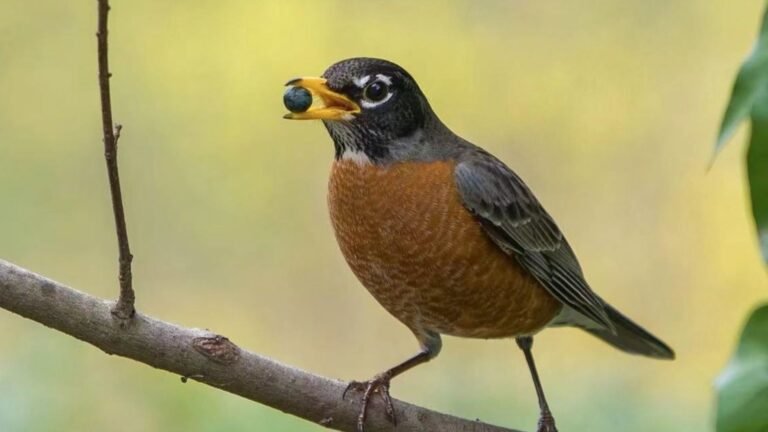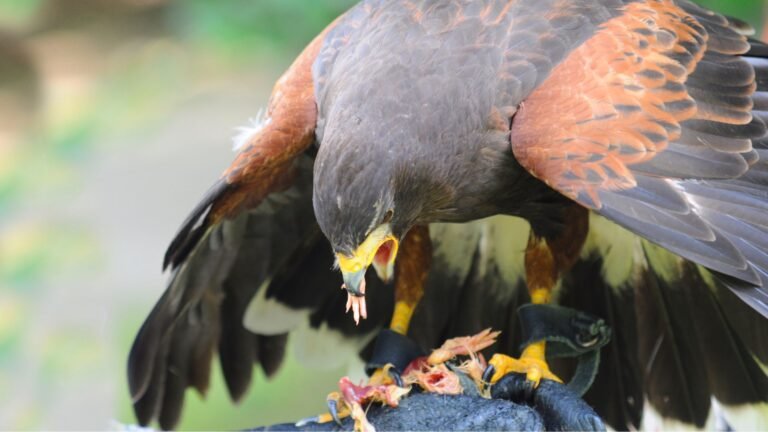Camp Robber Bird: The Gray Jay

The Camp Robber Bird, also known as the Gray Jay or Whiskey Jack, is a fascinating and unique bird species that can be found in various parts of North America. If you happen to go on a picnic or perhaps camping, you won’t have to wait long to spot a few of them, since they don’t call this bird the ‘Camp Robber’ for nothing.
So let’s learn and explore all you need to know about this cheeky feathered friend. From its distinctive appearance to its interesting nesting behavior, there is much to learn about this intelligent and resourceful bird.
What Is The Camp Robber Bird?
The Camp Robber Bird, also known as the Grey Jay, belongs to the Corvidae family and is recognized for its omnivorous diet and preference for forests and mountainous regions. Originally called the Canada Jay, the Gray Jay was also known as ‘Whiskey Jack.’ Its scientific name is Perisoreus Canadensis.
These intelligent birds are known for their resourcefulness in finding food, often scavenging from campsites and picnic areas, hence earning the name ‘Camp Robber’. Their foraging habits include storing food for later consumption and exhibiting a clever adaptation for survival in harsh winter conditions.
Camp Robber Birds have a distinctive call and are often seen fearlessly approaching humans in search of handouts, displaying their bold and curious nature. Their presence in North American forests and mountainous terrains adds to the charm of these versatile and adaptable avian species.
The Camp Robber Bird or Gray Jay, thrives in environments characterized by dense forests, mountainous landscapes, and a rich ecosystem that provides ample food sources and nesting opportunities.
What Does It Look Like?

The Camp Robber Bird or Gray Jay,is characterized by its unique coloration and feather patterns, which play a crucial role in its camouflage and protection within its natural habitat. Its average body length ranges from 10 to 12 inches and a wingspan of approximately 18-20 inches.
The Camp Robber Bird displays a variety of colors in its plumage, ranging from subtle shades to vibrant hues that contribute to its visual allure and natural camouflage.
Its plumage features a striking combination of black, gray, and white colors, creating a visually stunning appearance. The wings exhibit distinct patterns of iridescent blues and greens, adding a shimmering effect as it takes flight. The tail feathers are long and elegantly designed, enhancing its graceful movements in the air. The subtle speckling on its chest and belly provides additional camouflage when foraging for food on the forest floor. The Camp Robber Bird’s physical attributes make it a master of disguise in the wilderness.
Where Can You Find The Camp Robber Bird?

The Camp Robber Bird can be spotted in various regions across North America, with a notable presence in forests, mountainous terrains, and specific natural reserves or parks known for their biodiversity.
These birds are particularly attracted to coniferous forests due to the abundant food sources like insects, berries, and seeds. They are commonly seen in places such as Yosemite National Park in California, Rocky Mountain National Park in Colorado, and Jasper National Park in Canada.
Birdwatchers and wildlife enthusiasts flock to these areas to catch a glimpse of the Camp Robber in its natural habitat. With their distinctive gray plumage and mischievous behavior, these birds add an element of charm to the diverse ecosystems they inhabit.
Characteristics of the Camp Robber Bird
Behavior
The Camp Robber Bird exhibits a fascinating array of behaviors, from its intelligent problem-solving skills and intricate vocalizations to its opportunistic feeding habits, territorial displays, and engaging social interactions within its community.
These birds exhibit remarkable cooperative breeding practices, with multiple individuals working together to raise offspring and defend their territory. Their territorial behavior is evident in the fierce defense of their nesting sites against intruders, displaying remarkable coordination in warning calls and movements.
In their social dynamics, Camp Robber Birds showcase intricate relationships, forming strong bonds within their groups and engaging in mutual grooming activities to strengthen social ties. This collaborative nature plays a crucial role in their survival and reinforces the importance of communal efforts in the wild.
Diet

The Camp Robber Bird or Gray Jay, sustains itself through an omnivorous diet that includes a wide range of food sources, from small animals and insects to pine cones, berries, and various plant matter found in its habitat.
These resourceful birds are opportunistic feeders, often scavenging for leftovers at campsites or picnics. Their keen eyesight helps them spot insects like beetles, caterpillars, and grasshoppers, which they catch swiftly. The Camp Robber Bird is known to raid bird nests for eggs and chicks, further displaying their adaptable diet. They are also fond of seeds and nuts, especially pine nuts from cones. With their diverse palate, these birds play a vital role in maintaining the ecosystem’s balance by consuming a variety of food sources.
Hunting behaviour
The Camp Robber Bird employs a variety of foraging techniques, including scavenging for carrion, hand-feeding from human sources, and utilizing its intelligence to locate and access food resources in its environment.
This bird, known for its bold and intelligent nature, has developed remarkable scavenging tendencies that allow it to thrive in various environments. It is often seen opportunistically feeding on carrion left behind by other animals, turning what may seem like waste into a valuable food source.
The Camp Robber Bird’s unique behavior of hand-feeding from humans showcases its adaptability and ability to forge symbiotic relationships for sustenance. Notably, these birds also demonstrate impressive problem-solving skills when faced with challenges in acquiring food, showcasing their resourcefulness and resilience.
Nesting
The Camp Robber Bird exhibits intricate nesting behaviors, including cooperative breeding efforts, incubation duties, and shared parental care responsibilities that contribute to the survival and development of its offspring.
Cooperative breeding among Camp Robber Bird pairs involves not only the primary breeding couple but also additional adult helpers assisting in various aspects of raising the young. These helpers may aid in foraging for food, defending the nest, or even taking turns with the primary parents in incubating the eggs. This shared caregiving dynamic helps increase the chances of successful breeding and ensures that the offspring receive adequate attention and resources for their growth and development.
How Does The Camp Robber Bird Reproduce?
The Camp Robber Bird engages in a complex reproductive process that involves courtship behaviors, nest construction, egg-laying, and parental care, all contributing to the continuation of its species within its habitat.
Courtship rituals among Camp Robber Birds play a vital role in pair bonding, where males exhibit elaborate displays to attract females. Once a pair bonds, they collaborate in nest-building activities, with both partners collecting materials such as twigs, grass, and feathers. The female takes the lead in egg-laying, generally laying 3-5 eggs in a clutch. During incubation, both parents take turns keeping the eggs warm. After hatching, both parents participate in feeding and protecting the offspring, ensuring their survival and growth.
Life span
Camp Robber Birds have a notable life span that varies based on environmental factors, predator threats, and seasonal challenges, with some individuals displaying remarkable longevity in the wild.
These birds, known for their resourcefulness and adaptability, typically have an average life expectancy of 7 to 10 years in the wild. Their ability to evade predators, such as hawks and owls, plays a crucial role in determining their survival rates. Camp Robber Birds have developed various defense mechanisms, including swift flight and quick reflexes, which help them outmaneuver their adversaries. Their intelligence and knack for finding food sources all year round contribute to their resilience in harsh winter conditions.






